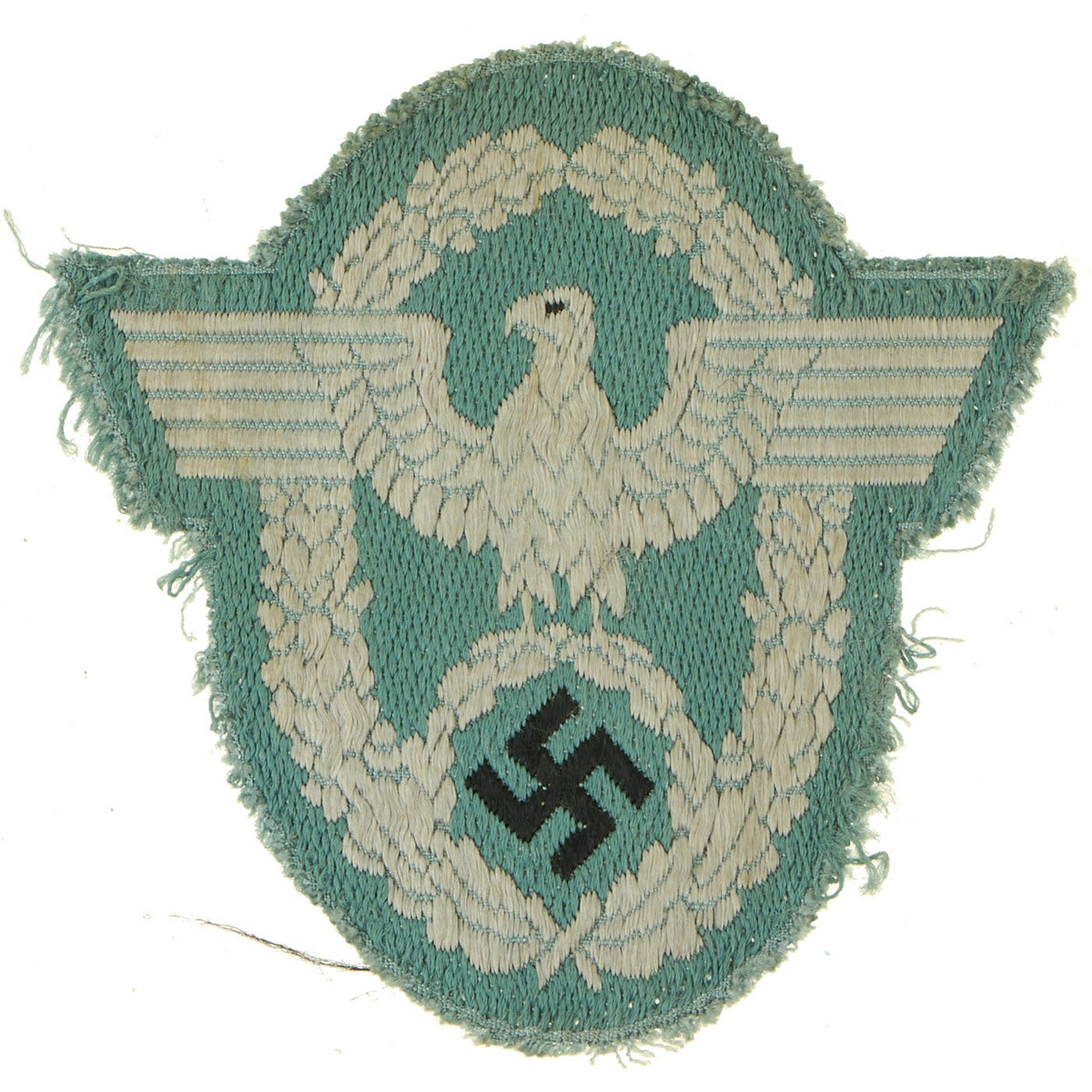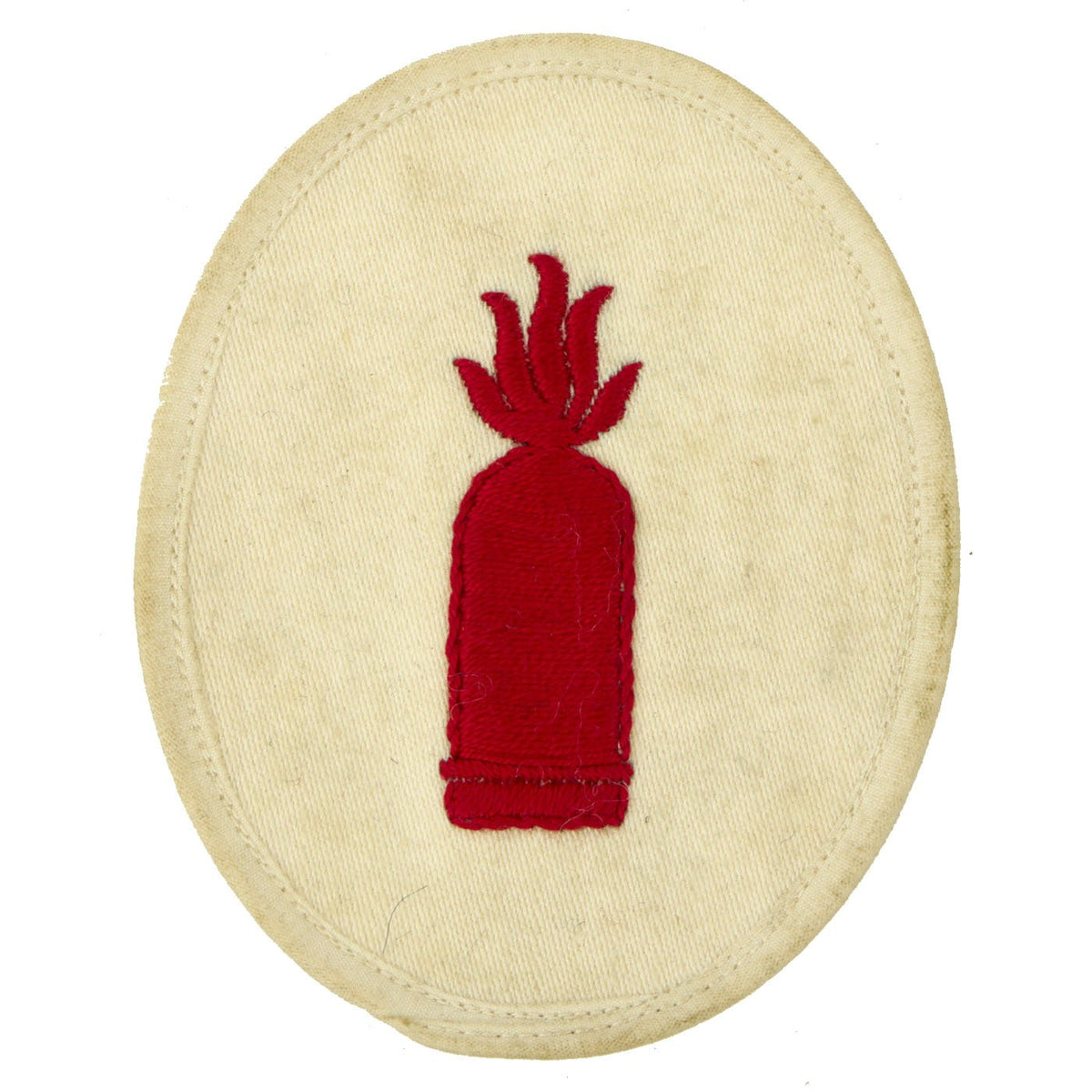Original German WWII Medal and Insignia Grouping with KvK I, Eastern Medal & Hindenberg Cross – 10 Items Original Items
$ 295,00 $ 118,00
Original Items: Only One Set Available. This is a very nice collection of German WWII Insignia & Awards, which was brought back from the European theater by a USGI after the war was concluded. It includes some a wide variety of medals and insignia, including a War Merit Cross, Eastern Front Medal, Hindenberg Cross, and more!
This lovely set includes:
– One German WWII War Merit Cross 1st Class with Swords. In really good cosmetic shape with a maker mark of 15 on the back for Friedrich Orth of Vienna. The catch hook for the pinback is missing.
– One German WWII Eastern Front Medal (Medaille Winterschlacht im Osten 1941/42) with attached Ribbon. This example is in very good condition, with a vibrant ribbon.
– One German WWI Honor Cross of the World War 1914/1918 (Hindenburg Cross) Medal without Swords, for actions not directly related to combat. Has a small ribbon installed.
– One German WWII Military Police Insignia, gray on a green background.
– One German WWII Ordnance Specialist Badge, white with a Red Flaming bomb, dated 1939.
– One German WWII Heer Army Panzer Mannschaften (Enlisted Men) Single Gold Chevron badge.
– One German WWII Kriegsmarine Navy Brass Cap Eagle Insignia. Marked on the back RZM M1/34 for Karl Wurster, Markneukirchen. Attachment clips are broken off.
– One German WWII Luftwaffe Flak Artillery Specialist Embroidered Badge.
– One German WWII Kriegsmarine Navy Musician Specialty badge.
– One German WWII Battle Flag Plastic Tinnie Pin – Reichkriegsflagge
A wonderful totally genuine grouping perfect for the German Medal and Insignia collector.
War Merit Cross 1st Class (Kriegsverdienstkreuz) with Swords (for Combat)
This was a decoration of NSDAP Germany during the Second World War, which could be awarded to military personnel and civilians alike. By the end of the war it was issued in four degrees, and had a related civil decoration. It was created by Adolf AH in October 1939 as a successor to the non-combatant Iron Cross which was used in earlier wars. The award was graded the same as the Iron Cross: War Merit Cross Second Class, War Merit Cross First Class, and Knights Cross of the War Merit Cross. The award had two variants: with swords given to soldiers for exceptional service “not in direct connection with combat”, and without swords for meritorious service to civilians in “furtherance of the war effort”. As with the Iron Cross, Recipients had to have the lower grade of the award before getting the next level.
Hindenburg Cross:
The Honor Cross of the World War 1914/1918 (German: Das Ehrenkreuz des Weltkriegs 1914/1918), commonly, but incorrectly, known as the Hindenburg Cross was established by Field Marshal Paul von Hindenburg, President of the German Republic, by an order dated 13 July 1934, to commemorate the distinguished deeds of the German people during the First World War. This was Germany’s first official service medal for soldiers of Imperial Germany who had taken part in the war, and where they had since died it was also awarded to their surviving next-of-kin. Shortly after its issuance, the government of NSDAP Germany declared the award as the only official service decoration of the First World War and further forbid the continued wearing of German Free Corps awards on any military or paramilitary uniform of a state or NSDAP Party organization.
This example is marked on the back with JK in a Triangle.
The Eastern Front Medal (German: Medaille Winterschlacht im Osten 1941/42) was a World War II German military decoration awarded to both German and Axis personnel. It was awarded to those who served on the German Eastern Front during the winter campaign period of 15 November 1941 to 15 April 1942 It was instituted on 26 May 1942 and was commonly known as the Ostmedaille (East Medal) or Russian Front Medal.
The medal was wryly called the Frozen Meat Medal or the “Order of the Frozen Flesh” (German: Gefrierfleischorden) by Heer, Luftwaffe and Waffen-SS personnel to whom it was awarded.
Qualification
Armed service personnel qualified for the badge after a minimum of 14 days served in active combat; 30 combat sorties for Luftwaffe members; 60 days of continuous service in a combat zone; being wounded or suffering a “frozen limb”, severe enough to warrant the issue of a Wound Badge. The medal could be awarded posthumously.
Fast Shipping with Professional Packaging
Thanks to our longstanding association with UPS FedEx DHL, and other major international carriers, we are able to provide a range of shipping options. Our warehouse staff is expertly trained and will wrap your products according to our exact and precise specifications. Prior to shipping, your goods will be thoroughly examined and securely secured. We ship to thousands clients each day across multiple countries. This shows how we're dedicated to be the largest retailer on the internet. Warehouses and distribution centres can be located throughout Europe as well as the USA.
Note: Orders with more than one item will be assigned a processing date depending on the item.
Before shipping before shipping, we'll conduct a thorough inspection of the items you have ordered. Today, the majority of orders will be delivered within 48 hours. The delivery time will be between 3-7 days.
Returns
The stock is dynamic and we cannot completely manage it because multiple stakeholders are involved, including our factory and warehouse. So the actual stock may alter at any time. It's possible that you may not receive your order once the order has been made.
Our policy is valid for a period of 30 days. If you don't receive the product within 30 days, we are not able to issue a refund or an exchange.
You can only return an item if it is unused and in the same state as the day you received it. You must have the item in its original packaging.
Related products
Uncategorized
Australian WWII Owen MK1 Machine Carbine SMG Custom Fabricated Replica with Sling Original Items
Uncategorized
Uncategorized
Uncategorized
Uncategorized
Uncategorized
Uncategorized
Uncategorized
Uncategorized
Uncategorized
Uncategorized
Uncategorized
Armoured Fighting Vehicles of the World: AFVs of World War One (Hardcover Book) New Made Items
Uncategorized
Angolan Rebel 1970s era 60mm Inert Display Mortar from Angolan Civil War Original Items
Uncategorized
Uncategorized
Uncategorized
Uncategorized
Uncategorized












































































